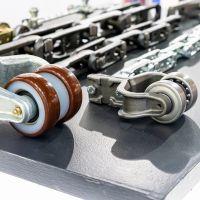Conveyor belts are crucial components in various industries, enabling the seamless transportation of goods and materials. However, due to continuous operation and exposure to various elements, conveyor belts are susceptible to wear and tear, leading to occasional breakdowns and damage. When these issues occur, it's vital to have the right conveyor belt repair tools on hand to ensure quick and efficient repairs, minimizing downtime and maximizing productivity. In this article, we will explore some of the essential conveyor belt repair tools and their significance in facilitating effective repairs.
1. Vulcanizing Press:
The vulcanizing press is a pivotal tool used in conveyor belt repair and splicing processes. It plays a significant role in joining two belt ends or repairing a damaged portion. The vulcanizing press applies heat and pressure to cure and bond the spliced or repaired area, creating a strong and durable joint. Vulcanization helps maintain the belt's integrity and ensures smooth operation without compromising its load-bearing capacity. This process is particularly crucial for heavyweight belts used in mining, steel, and bulk material handling industries.
2. Belt Cutters:
Belt cutters are essential tools for accurately and cleanly cutting conveyor belts to the desired length during installation or repair. They come in various types, such as handheld cutters, electric or pneumatic cutters, and heavy-duty guillotine-style cutters. Properly cutting the belt ensures that the splicing process is precise and secure, preventing potential belt tracking issues or uneven loads during operation.
3. Belt Skivers:
Belt skivers are specialized tools used to remove the top cover of the conveyor belt to prepare it for splicing. By removing the cover, the skiver creates a clean and rough surface for optimal bonding during the vulcanization process. It also facilitates the proper alignment of the belt ends, enhancing the overall strength and longevity of the splice.
4. Belt Clamps:
During splicing or repair, it's essential to hold the belt ends firmly together. Belt clamps are designed for this purpose. They securely grip the belt ends, preventing any movement during the vulcanization process. Belt clamps ensure that the splice remains aligned and stable, reducing the risk of premature failure and extending the belt's service life.
5. Fasteners and Splice Materials:
Fasteners and splice materials, such as adhesives, cements, and metal or plastic fasteners, are crucial elements in conveyor belt repair. These materials facilitate the bonding process and ensure a strong and reliable splice. Depending on the application and belt type, various splice methods may be employed, including mechanical fasteners or adhesives. Proper selection and application of splice materials are essential to achieve a durable and efficient repair.
6. Belt Skirtboard and Scrapers:
Belt skirtboard and scrapers are tools used to maintain the cleanliness of the conveyor belt. Belt skirtboard helps contain material on the belt, reducing spillage and wear on the idlers and pulleys. Scrapers, on the other hand, remove residual material adhering to the belt surface, preventing buildup and potential damage. By employing these tools, the conveyor system's overall efficiency and longevity are improved.
7. Belt Tracking Tools:
Proper belt tracking is vital to prevent misalignment, which can lead to premature wear and damage. Belt tracking tools, such as tracking rollers and alignment systems, help ensure that the belt runs true and centered on the conveyor structure. These tools contribute to smooth operation, reducing the risk of unplanned downtime and extending the belt's lifespan.
8. Safety Equipment:
Last but not least, safety equipment is a crucial aspect of any conveyor belt repair process. Personal protective equipment (PPE), such as gloves, goggles, and hard hats, must be worn by personnel conducting repairs. Additionally, lockout/tagout devices should be used to ensure the conveyor is safely isolated during maintenance or repair activities. A safe working environment protects the repair personnel and ensures that repairs are conducted efficiently and without incidents.
In conclusion, conveyor belt repair tools are essential for maintaining the efficiency and reliability of conveyor systems in various industries. Proper selection and usage of these tools ensure that repairs are conducted effectively, minimizing downtime, and maximizing productivity. Additionally, adherence to safety protocols ensures the well-being of maintenance personnel and prevents accidents. Investing in high-quality conveyor belt repair tools and prioritizing regular maintenance can significantly extend the lifespan of conveyor belts and contribute to the overall success of industrial operations.
